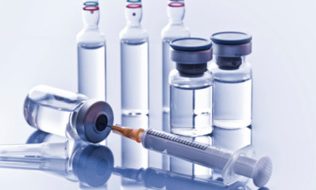

Only eight per cent of Canadian women who are eligible for a vaccine that covers nine strains of the human papillomavirus are actually receiving it.
While one barrier is a lack of knowledge among health-care professionals and patients alike, another is the lack of coverage in group benefits plans, said Dr. Angel Chu, an infectious diseases physician at Foothills Medical Centre, during a session at Benefits Canada’s 2019 Calgary Drug Trends Summit on Oct. 24.
“That’s one of the biggest frustrations because these are patients at high risk of cancers and we have the tools, but they just can’t get it because of financial barriers.”
Read: How HPV is causing more than just cervical cancer
Every day, nine Canadian women are diagnosed with cervical cancer and three lose their lives to the disease, said Dr. Chu, noting the No. 1 risk factor for the cancer is HPV. It’s estimated that about 400,000 women will have an abnormal pap smear each year, while one in 149 will be diagnosed with cervical cancer and one in 478 will die from it.
HPV is essentially a sexually transmitted cancer, she said, and it’s estimated that eight out of every 10 Canadians will get an HPV infection at some point in their lives. In 2016, the Canadian Cancer Society estimated that 4,400 Canadians were diagnosed with an HPV-related cancer — broken down by females (64 per cent) and males (36 per cent). Globally, HPV is responsible for 84 per cent of anal cancers, 70 per cent of vaginal cancers and high rates of both penile and oropharyngeal cancers in men.
“The traditional thinking is that HPV is a disease mainly seen in women,” said Dr. Chu. “But in fact, one in three HPV-related cancers actually occur in males.”
The infection also causes genital warts, she added, noting this has a great impact on workplace productivity as the median duration for an episode of warts is 125 days. A patient will need to take time off work, every week, for several weeks or months to receive treatment.
Read: Highlighting the role of vaccines in preventing HPV-related cancer
“We don’t actually know what causes other cancers . . . but with cervical cancer, we know with virtually 100 per cent certainty that it’s caused by an infection. So if we can somehow prevent that infection, we can actually prevent all these cancers from happening. And we currently have the tools to do that with HPV vaccines.”
Currently, a vaccine is available that covers nine strains of HPV and prevents 85 to 95 per cent of all HPV-related cancers, said Dr. Chu.
Among those who are vaccinated, there’s been a 90 per cent decline in HPV infections and genital warts, a 45 per cent decline in low-grade abnormal pap smears and an 85 per cent reduction in cervical pre-cancerous changes, she added. “If we can prevent 85 per cent of cervical pre-cancers, we can extrapolate that in the future; these women are no longer going to be developing cervical cancers. It’s been a hugely successful vaccine worldwide.”
For plan sponsors, a lot of tools exist to help join this fight, said Dr. Chu. “Certain facilitators to [increase the uptake of] vaccination include onsite . . . clinics; having information sheets, media campaigns or publishing on a company’s website about health and wellness; talking about HPV disease; and encouraging employees to get vaccinated.”
Read more coverage of the 2019 Calgary Drug Trends Summit.
